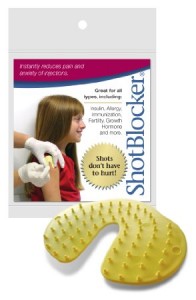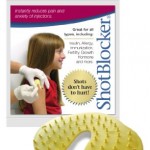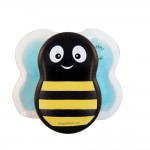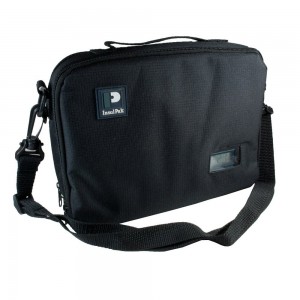 Some medications commonly used for systemic autoinflammatory diseases, not only must be refrigerated, but kept at a very specific temperature range. Although traveling with your medications does add an extra thing to plan for, it should not prevent you from traveling.
Some medications commonly used for systemic autoinflammatory diseases, not only must be refrigerated, but kept at a very specific temperature range. Although traveling with your medications does add an extra thing to plan for, it should not prevent you from traveling.
Check your medication’s information sheet to determine the optimal temperature range. If you do not have this information, ask your pharmacy, or call the patient assistance number that is listed on the medication box. Biological medications usually have a very specific and narrow temperature range they need to be maintained at. Write this temperature range down and carry it with you so you don’t forget.
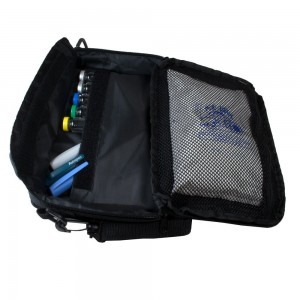 Use a Cooler or Insulated Medication Travel Bag
Use a Cooler or Insulated Medication Travel Bag
Keep the medication in a cooler filled with ice packs or gel packs. Ice packs or gel packs you pre-freeze are better than using just ice because they won’t turn to water and get into your medication. However, you can also use ice when needed. Put the packs into sealed freezer bags just in case they do leak. If you must use ice, also put that into freezer bags. In some cases, you may not have access to ice or a freezer to refreeze your gel packs. A good backup solution is to buy frozen fruits or vegetables at the store to use in your cooler, if you cannot get ice.
You can buy the insulated medication bag like the one pictured here on Amazon, but some prefer to use regular travel coolers or insulated lunch bags. Click here to see cooler recommendations from patients in the Autoinflammatory Alliance community.
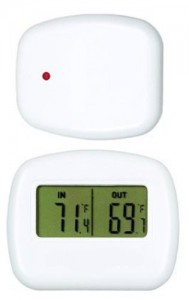 Get a Refrigerator Thermometer
Get a Refrigerator Thermometer
Having a thermometer will help you monitor your medication’s temperature. Medical coolers or insulated packs may come with a thermometer built in. If yours does not, buy a freezer/refrigerator thermometer to keep in the cooler. This digital thermometer has a remote sensor so you can keep an eye on the temperature without opening the bag.
Keep in Mind the Location of the Cooler
Be conscious of where you set your cooler with the medication down. Do not leave it in a hot car or direct sun. Even the best of coolers will heat up in the car or in direct sunlight. Keep it in cool dark locations or with you at all times.
Hotels
Do reserve hotel rooms that have a refrigerator in the room. You may have to call individual hotels before you travel to ensure you get a room with a refrigerator. Check the temperature of the refrigerator when you get there and read how it operates. Many hotel room refrigerators do not cool down enough for biological medications and some have an energy saving mode where they shut of after several hours. It’s bet to also bring a cooler with you or be prepared with bags to use ice to keep your medications cool as a back up plan.
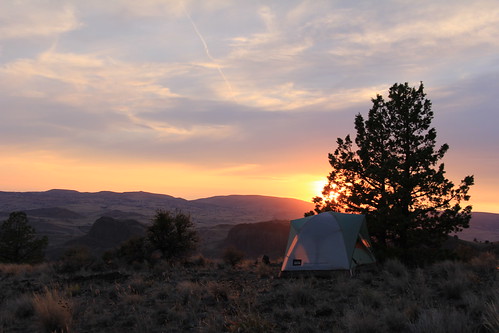 Camping Tips
Camping Tips
Camping presents it’s own set of challenges, but it’s not impossible to camp with your medication. If you have the means, get a refrigerator for your camping trailer. This is the easiest solution.
You can also buy coolers that plug into your vehicle’s 12-volt plug. However, many only cool to a maximum temperature difference compared to the outside temperature and this may not keep your biological medication at a proper stable temperature. For example, a plug-in cooler that cools to 40 degrees F below the outside temperature will not be cold enough for Kineret if the outside temperature is 100 degrees F. If camping in the winter or cool locations, one of these plug-in coolers may work well.
If you do not have a refrigerator available to you, then you will need to keep your mediation in a cooler and be vigilant about replacing the ice and monitoring the temperature. If you are unfamiliar with the area you plan to camp, call ahead to determine what is available for ice. Some campgrounds may have ice to sell, while at others you may need to drive into town to buy ice.
We use the this medication cooler bag for camping. We pack our anakinra with the gel pack that the bag comes with and put the entire bag in large Ziploc bags to keep it dry. We then place it in the cooler at the top and this has worked well for many week-long camping trips. If you are a seasoned camper, then you are already used to monitoring the food cooler temperature and replacing the ice as needed, so just continue to do this for the medication also.
Also when camping, be aware of where you store the medication throughout the day and how the sun travels over your campsite. What was a shaded cool location in the morning, may be bright and sunny in the afternoon. Place the medication cooler in a location that will remain shaded and as cool as long as possible throughout the day. You may want to create a spot that is shaded all day long by hanging a tarp or erecting a shade canopy. Keep in mind, unless it’s air conditioned all day, inside your trailer or tent may get very hot during the day. Also, make sure that it is in a safe place where wild animals cannot get at it, especially if the cooler you are using has ever stored food, since they may be attracted to the smell of the bag.
Packing the Medication
Keep the medication in it’s box with the prescription label, and place that into a freezer bag. This will protect your medication from getting damp or wet inside the cooler. Pack enough medication and supplies to last the trip plus a few extra days just in case you are delayed in your travels.
Pack Extra Freezer Bags
Bring some extra freezer bags with you. If you are traveling for several hours or several days without access to a refrigerator, then you can use the freezer bags to fill with ice. In a pinch, you can fill up the bag with ice from a restaurant.
If you would like more tips for travel, or how to help your child with injections, take a look at our new “Healthier Ever After” book, available now as a download, and in print in April 2014.




